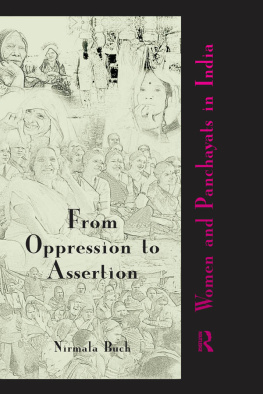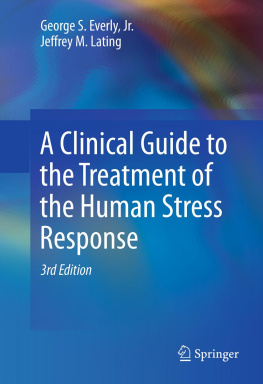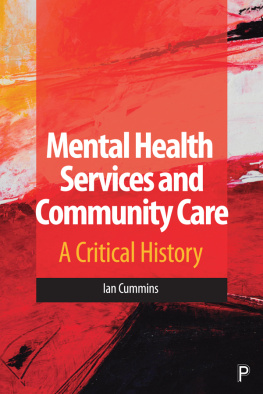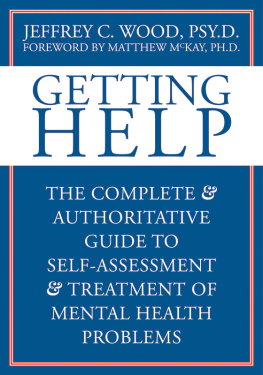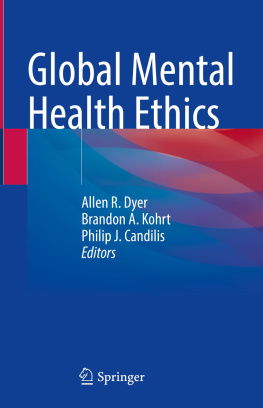THE JOHNS HOPKINS GUIDE TO
PSYCHOLOGICAL FIRST AID
THE JOHNS HOPKINS GUIDE TO
PSYCHOLOGICAL FIRST AID
GEORGE S. EVERLY, JR.
Johns Hopkins University
JEFFREY M. LATING
Loyola University Maryland

2017 Johns Hopkins University Press
All rights reserved. Published 2017
Printed in the United States of America on acid-free paper
9 8 7 6 5 4 3 2 1
Johns Hopkins University Press
2715 North Charles Street
Baltimore, Maryland 21218-4363
www.press.jhu.edu
Library of Congress Cataloging-in-Publication Data
Names: Everly, George S., Jr., 1950 | Lating, Jeffrey M.
Title: The Johns Hopkins guide to psychological first aid / George S. Everly, Jr., PhD., A.B.P.P., Johns Hopkins University, Jeffrey M. Lating, Ph.D., Loyola University Maryland.
Other titles: Guide to psychological first aid
Description: Baltimore : Johns Hopkins University Press, 2017. | Includes bibliographical references and index.
Identifiers: LCCN 2016040195| ISBN 9781421422718 (pbk. : alk. paper) | ISBN 9781421422725 (electronic) | ISBN 1421422719 (pbk. : alk. paper) | ISBN 1421422727 (electronic)
Subjects: LCSH: Crisis intervention (Mental health services) | Psychiatric emergencies. | Stress (Psychology)Prevention.
Classification: LCC RC480.6 .E91145 2017 | DDC 616.89/025dc23
LC record available at https://lccn.loc.gov/2016040195
A catalog record for this book is available from the British Library.
Special discounts are available for bulk purchases of this book. For more information, please contact Special Sales at 410-516-6936 or specialsales@press.jhu.edu.
Johns Hopkins University Press uses environmentally friendly book materials, including recycled text paper that is composed of at least 30 percent post-consumer waste, whenever possible.
To the pioneers who gave birth to the field of disaster mental health... what an amazing journey it has been. We didnt always get it right at first, but we kept trying until we did.
And to Patricia Copps Everly and our mutual renaissance! Thank you! (GSE)
To all those who have taught me so much about the field of disaster mental health. It is a privilege to be able to share what I have learned.
To George Lating, for your willingness to always be there and listen.
And to Austin and Jenna, who are the source of my greatest joy. (JML)
PREFACE
How Did We Get Here?
THE IMPORTANCE OF PROVIDING SUPPORT to someone in emergent distress is self-evident. Whether its responding to the attacks of September 11, 2001, Hurricane Katrina in 2005, the psychological effects of Ebola in Texas in 2014, the terrorist attacks in San Bernardino and Paris in 2015 and Brussels in 2016, or responding to the emotional consequences of a devastating house fire or medical crisis, there is most commonly a compelling desire to help those in distress. What may be less evident is how to provide such assistance, especially when a person is in psychological distress. In this book, we describe the development and guidelines for implementation of a model for providing psychological support to a person in acute psychological distress. We call this support psychological first aid (PFA). Think of it this way, as physical first aid is to the practice of medicine, psychological first aid is to the practice of psychotherapy. In this book, we describe one specific model of PFA, the Johns Hopkins RAPID PFA model. It is a unique model in that it is theoretically grounded, evidence informed, and evidence based.
So lets start with a little background.emergence of the relatively new field of disaster mental health (circa 1992).
Our first major attempt at developing crisis-oriented models of psychological support was necessitated by the Gulf War of 199091. The nation of Kuwait lies in a portion of the Arabian Peninsula. It possesses one of two significant natural harbors on the Arabian Gulf, yielding an area long known for its prominence as a mercantile center and for its industrious inhabitants. By the mid-eighteenth century, Kuwait was well established as an economic hub, and Sabah I emerged as Sheikh of Kuwait. Kuwait continued its commercial development primarily as a trading, pearl diving, and transportation center under his rule. By the turn of the twentieth century, oil had been discovered in the Middle East. In 1938, a major oil strike occurred in the Burgan region of Kuwait. In 1946, Kuwait inaugurated its first oil exportation. In 1981, the Arab Gulf Co-operation Council, consisting of Kuwait, Bahrain, Oman, Qatar, Saudi Arabia, and the United Arab Emirates, was formed to facilitate cooperation among major regional oil-producing countries. Kuwait prospered from its petroleum revenues. However, on July 17, 1990, Iraqs Saddam Hussein accused Kuwait of driving down oil prices through overproduction. Iraq had also become a major oil-producing nation but was suffering to some degree from low oil prices in the wake of a long war with Iran.
On August 2, 1990, the Iraqi army invaded Kuwait, occupying the city of Kuwait and the major petroleum-related facilities. In response, US President George H. W. Bush convened a military coalition to liberate Kuwait. On January 16, 1991, allied forces began the air war and, subsequently, a ground campaign, designed to drive Iraqi forces from Kuwait. February 26, 2016, marked the twenty-fifth anniversary of the liberation of Kuwait from invading Iraqi forces.
In April 1992, the Amir of Kuwait, Sheikh Jaber Al-Ahmed Al-Sabah established the Social Development Office (SDO) within the Amiri Diwan (Office of His Highness the Amir of Kuwait) to foster the psychological rehabilitation of the Kuwaiti people who had been traumatized as a result of the Iraqi occupation of Kuwait. SDO was established under the leadership of Dr. Basheer Al-Rashidi, who was selected as chairman of SDO. In 1992, at the request of former NIMH Director Dr. Bertram Brown and Dr. Al-Rashidi, the author (GSE) was asked to serve in the SDO to develop clinical training programs and was later appointed senior advisor on research to the amir, serving in the Office of the Amir.
We faced two significant barriers in Kuwait: (1) the stigma associated with seeking mental health services and (2) the paucity of clinicians trained in emergency mental health care and the treatment of psychological trauma. We could not take a traditional pathology-oriented approach to the delivery of mental health services, despite the fact that posttraumatic stress disorder (PTSD) and posttraumatic depression appeared to be virtually epidemic in the Kuwaiti population, appearing at prevalence rates estimated at 18 percent to 40 percent. We chose to use a resilience approach to the provision of mental health services.
Although considerable effort was spent to train Kuwaiti psychologists and physicians in diagnosing and treating psychological trauma, we realized we would have to embrace a nontraditional approach to recognition and intervention if we were to overcome the two aforementioned barriers. The resilience approach seemed well suited. Such an approach may be viewed as assisting people in rebounding from adversity through an emphasis on facilitating adjustment to challenging circumstances, rather than through a pathology-oriented treatment and rehabilitation approach.
We reviewed literature that suggested variations on a theme of psychological crisis intervention delivered by those outside of the mental health professions that might prove useful in our current dilemma. Crisis intervention should not be considered treatment but, rather, as a means of fostering resilience, that is, helping people to rebound from adversity, and must be advertised as such. Perhaps the first solid evidence that a crisis-oriented model might be applicable emerged from the efforts of T. W. Salmon (1919) who made a significant contribution to the literature on nontraditional psychological intervention through his recollections and analyses of interventions with shell shock and war neuroses during World War I. He observed that acute crisis-oriented interventions were more effective than traditional psychotherapeutics, a finding that would be shown again in the wake of the terrorist attacks of September 11, 2001. Another significant contribution came from the work of Eric Lindemann (1944) and Gerald Caplan (1964) in community psychiatry after the tragic Cocoanut Grove nightclub fire of 1942. Last, the 1960s and 1970s saw the deinstitutionalization of mental health services and the emergence of the community mental health movement. The emergent components of many community mental health centers relied heavily on community volunteers trained exclusively in psychological crisis intervention.
Next page

